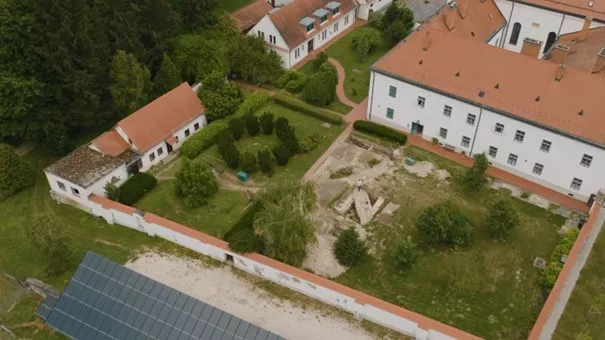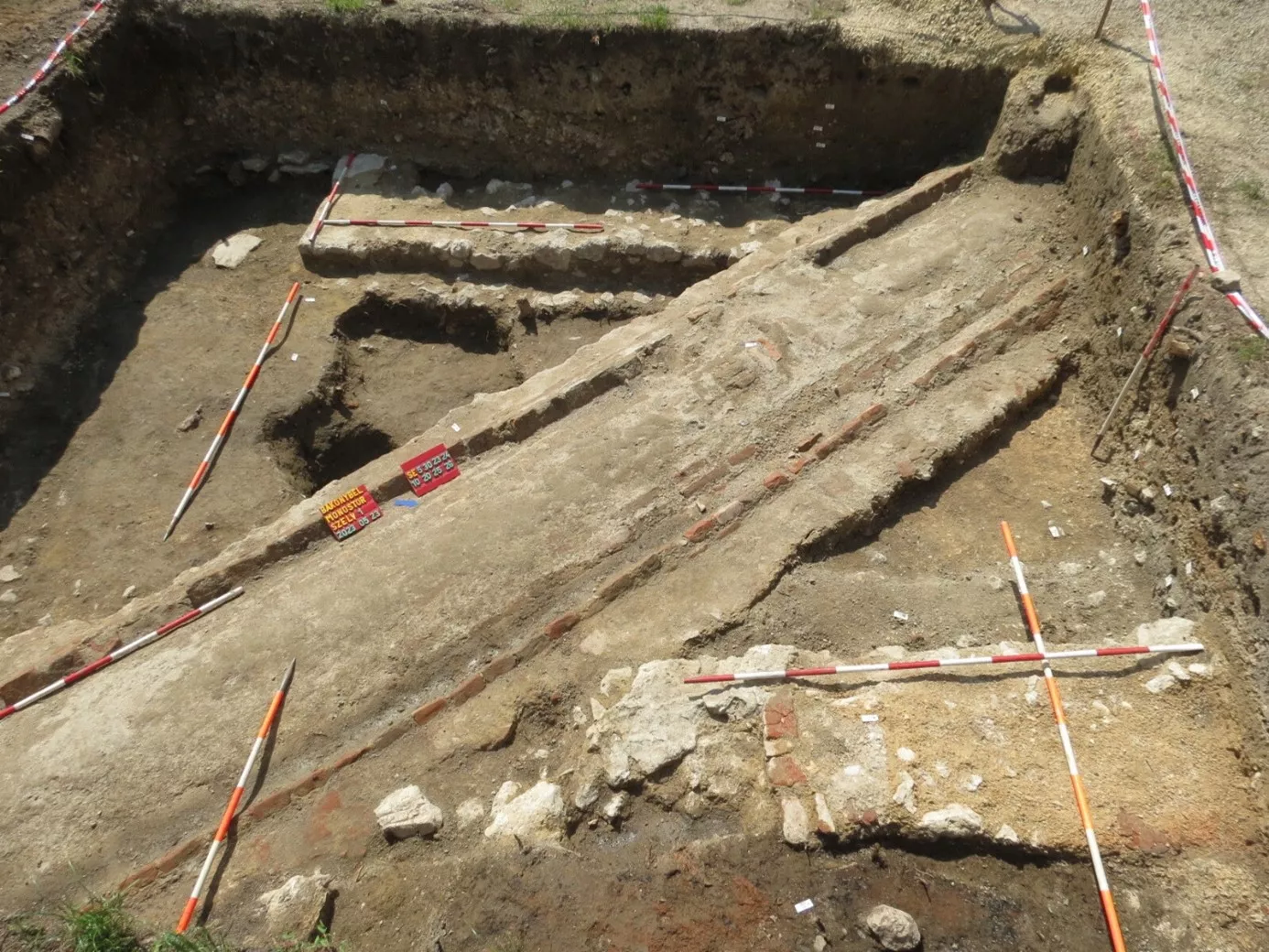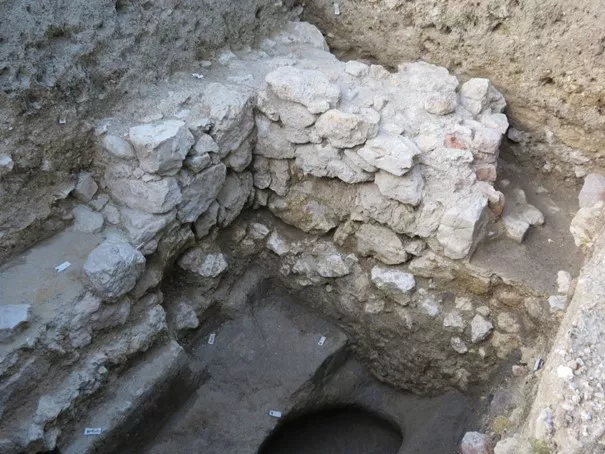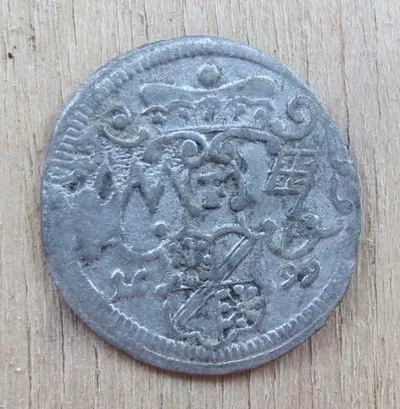As part of the Kings, Saints and Monasteries research program supported by the Eötvös Loránd Research Network (ELKH), the on-site phase of the archaeological research at the southern courtyard of the Baroque convent of the Saint Maurice Monastery in Bakonybél, initiated in April 2022, is nearing its completion. Results of the excavation organized by the ELKH Research Centre for the Humanities (BTK) and led by Nagy Szabolcs Balázs, a university lecturer at the ELTE BTK Institute of Archaeology, included identifying the foundational structure of the medieval monastery and determining the age of the complex. Additionally, the researchers also discovered numerous valuable artifacts.

A bird's-eye view of the excavation area
The field research in Bakonybél this year is the straight continuation of the excavation carried out in 2022. The archaeologists already observed intriguing findings last year concerning the medieval, early modern, and modern history of the Saint Stephen-founded monastery. Based on the archaeological phenomena observed in the newly opened research trenches, they have now managed to contextualize last year's results as well.
The researchers achieved a real breakthrough in the early architectural history of the monastery. The wall fragments, floor levels, and other objects uncovered in the previous year, along with the current findings, now form a coherent and well-interpretable system, revealing the foundational structure of the medieval monastery. They successfully identified crucial points of the monastery's central complex, including the cloister walkway and details of the eastern, southern, and western wings surrounding it.

Detail of the medieval monastery's cloister walkway, bounded by stone walls, with the diagonal brick drain that caused damage to the remains
The medieval convent was most probably connected to the southern side of the church, and its form shows the characteristic cloister arrangement, meaning that the nearly square central area (garth) was surrounded by covered walkways and the principal buildings on three sides, which contained the monks’ liturgical, residential, and work areas.
Another result of at least equal importance is that the archaeologists found solid references for dating all of these. The described complex was presumably built with stone during the 13th century in the form which may have defined the appearance of the convent until the 1530s-1540s. Although the surviving stone walls do not originate from the early 11th-century founding period, certain observations, primarily regarding the burials uncovered in the cloister walkway area, suggest that the monastery might have followed a similar layout much earlier, at least in the eastern wing and cloister area.

Detail from the eastern chamber of the southern wing of the monastery, with medieval door openings
At the beginning of the Turkish occupation, the monastery was hastily fortified, but it soon began to decay and by the end of the 17th century, it had deteriorated completely, becoming overgrown with forest. Based on the uncovered remains from the modern period, it seems that in the early 18th century the returning Benedictines wanted to build their first convent precisely over the walls of the medieval monastery, following the alignment of the several-hundred-year-old remains. The modifications to the original plans were most probably caused by the collapse of their first church, dated in written sources as well. Thanks to this, the current complex is located north of the medieval wings, so that the entire medieval monastery (except for its church) lies beneath the mostly undeveloped courtyard covered with trees, shrubs, and grass, which is remarkably fortunate in terms of research.

Detail of a burial from the Árpád period
The valuable findings of the excavation include the material remains of the complex and its past furnishings, such as various stone carvings, painted terracotta (Backstein) fragments, stove tiles, fragments of lead frame of stained-glass windows, book clasps, and fragments of glass and ceramic vessels.

Finding from the years after the Turkish occupation: a 1699 coin of Johann Philipp von Greifenclau zu Vollraths, Bishop of Würzburg
Perhaps the most spectacular finding is a fragment of an unglazed floor tile depicting a griffin, undoubtedly originating from the monastery's church. The scholarly literature dates it to the 12th century, maybe the 11th-12th centuries.

Ornate floor tile fragment with griffin figure from the 1100s
According to the current plans, the on-site phase of the archaeological research will conclude in Pannonhalma, closing the joint project of ELKH and BTK.